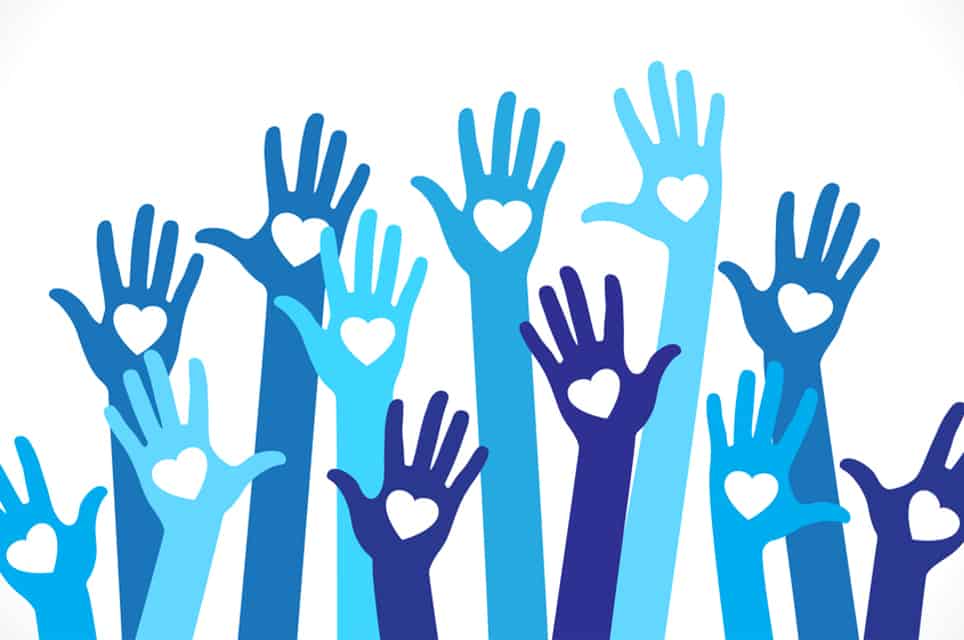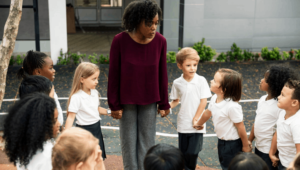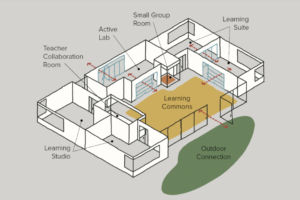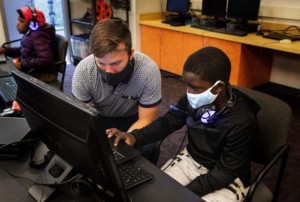The Scientific Case for Cultivating Grateful Learning Communities
Key Points
-
Understanding the brain science of gratitude helps us understand the value of nurturing relationships, cultivating a positive culture, and fostering well-being, but we believe it has the power to directly impact learning.
-
By planning activities with voice and choice, we strengthen relationships and develop expert learners who make connections between things they are grateful for and what we are learning.

By: Allison Posey and Lainie Rowell
What do you think of when you hear the words “gratitude” or “thankfulness” in the context of education? For some, the mind goes to a handprint turned into a turkey for Thanksgiving art. Others might go straight to staff appreciation week. And while it is unlikely we will catch someone saying, “gratitude sucks”, we’ve found that many underestimate the power of creating grateful learning communities. And for those who are downright skeptical that gratitude has a place in day-to-day learning, we’ve got some fascinating science to share.
Developing Gratitude
When we are born, our brains are surprisingly unformed. It takes us months to lift our heads, eat independently, or walk. Contrast that with a newborn giraffe who stands within 30 minutes and is running 10 hours after birth!
For humans, this slow brain development is an advantage. It allows us to construct our brains so they are efficient and appropriate to the environment in which we live. The extra time we take to acquire specialized skills helps us develop brains that can manage complex reasoning, communication, social interaction, and gratitude.
The study of gratitude is still relatively new, but research by Jeffrey J. Froh, PsyD, and Giacomo Bono, PhD, finds that the benefits of cultivating gratitude in students are significant. Here are considerations for the developmental stages of gratitude:
- Infancy to age six: Nurture the development of foundational positive characteristics that later lead to deep and authentic gratitude.
- Ages seven to ten: Kids start to reliably understand how to experience and express gratitude.
- Ages eleven and older: Those who have developed a grateful disposition are happier, more optimistic, and get better grades compared to their peers who are less grateful. They also have stronger social relationships.
Essentially, the interactions students have in our learning communities directly impacts the neurodevelopment of their brains.
Gratitude and the Brain
In moments of gratitude, our brain releases dopamine and serotonin, the two neurotransmitters that make us feel ‘good’ and enhance our mood. Plus, dopamine has been directly connected to motivation and learning. While there have not yet been many studies of the neural mechanisms behind gratitude (Wood et al., 2008b), we do know that there is not one localized “spot” or “center” for gratitude in the brain. Instead, there is widespread activation of many neural networks. There are also individual differences, or variation, in brain activation during moments of gratitude.
Two parts of the brain that are frequently active during moments of gratitude include:
- the medial prefrontal cortex (MPFC) during moments of reward, value judgements, bonding, and empathy (Fox, et al. 2015). This area is also active when we understand others (theory of mind), including their intentions and actions (Mitchell and Phillips, 2015).
- the anterior cingulate portion (ACC) of the MPFC when you imagine being helped by another or after a rewarding social interaction.
Teaching and Learning Implications
Understanding the brain science of gratitude helps us understand the value of nurturing relationships, cultivating a positive culture, and fostering well-being, but we believe it has the power to directly impact learning.
We can use gratitude to activate multiple parts of the brain in kids and adults!
Universal Design for Learning (UDL) is a research-based framework to optimize teaching and learning (Rose, Meyer, & Gordon, 2014). It uses a model of the brain based on three broad networks that are activated during learning. Practicing gratitude activates all three:
- Recognition networks (the what of learning) are activated when we recognize and understand what someone has done for us.
- Strategic networks (the how of learning) are activated when we pay our gratitude forward or take action to be grateful.
- Affective networks (the why of learning) are activated when our interests and identities are brought into the learning.
Essentially, the interactions students have in our learning communities directly impacts the neurodevelopment of their brains.
Allison Posey and Lainie Rowell
When we offer flexible options in our lessons that empower learners to bring their identities and interests into the learning, we share an appreciation for how unique and dynamic our learners are. By planning activities with voice and choice, we strengthen relationships and develop expert learners who make connections between things they are grateful for and what we are learning.
Gratitude: A Love of Learning Story
During professional learning, Mr. Peron experienced something new- he was given a choice about what and how he wanted to learn that day. It seemed so simple, but instead of the typical stand and deliver presentation, he could watch videos, work with a facilitator, or research ideas on his own. After lunch, they shared what they learned either by recording a short video reflection or sharing live with the group. He felt reinvigorated from his learning that day.
Mr. Peron experienced gratitude in how the flexibility allowed him to learn what he needed in a way that worked for him. He was motivated to pay it forward.
In his classroom, instead of the traditional storytime lesson where students listened and followed along as he read aloud from a book, he gave students choice and voice. They could read the chapter on their own, use an audio version, or join him to read aloud. They could share their ideas verbally, on a graphic organizer, or by diagramming. As long as they were analyzing how the setting contributed to the plot of the book, there was some flexibility.
One student, who often had to be reminded to sit still during the full group read-aloud and had become disengaged during reading, worked independently the entire time. She turned in a thorough analysis of how the setting contributed to the plot and shared, “I am a reader. The choice helped me want to be in class today.”
Could gratitude combined with inclusive practices be the catalyst for positive transformation in our learning communities and the worldwide community at large? We believe it is!
Allison Posey is an international leader for implementation of Universal Design for Learning. She works at CAST, where she collaborates to apply current understanding from brain research into instructional practices. Prior, Allison was a life science teacher in high school and community college settings and still teaches at Lasell University. She received a degree in Mind, Brain, and Education from Harvard Graduate School of Education and is author of Engage the Brain: How to design for learning that taps into the power of emotions (ASCD, 2018) and Unlearning: Changing your beliefs and practice with UDL (CAST Publishing, 2020).
Lainie Rowell is an educator, international consultant, writer, podcaster, and TEDx speaker. She is the lead author of Evolving Learner, a contributing author of Because of a Teacher, and her latest book, Evolving with Gratitude, was just released.







Thom Markham
Hands with hearts in the visual but not one single mention of the heart in the article. This is way outdated. The brain reacts to the emotion of gratitude, appreciation & empathy via signals sent through the heart. See www.heartmath.org for the science. Gratitude is a whole body experience not a brain function.